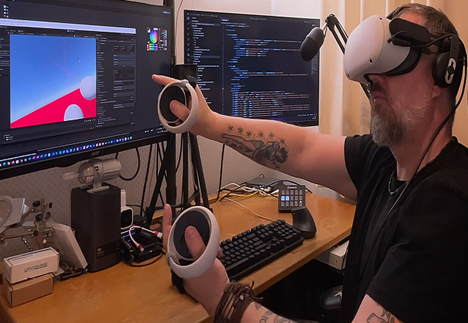Virtual Reality (VR) – Addressing the Requirements of Immersive Experiences with AWS
VR immerses users in a completely simulated environment, shutting out the real world completely. This allows users to experience a completely different reality through purpose-built VR interface equipment such as that shown in the following figure:

Figure 11.1 – The author building a VR application with an Oculus Quest 2 headset
Of course, VR is great for video games. That said, first-time users tend to be overwhelmed by how many applications for non-gaming purposes are available on app stores such as SteamVR, Pimax, and Viveport.
In VR, you can soar over the Grand Canyon one minute, and explore the Louvre the next. You can learn a new language much quicker by recreating social interactions and connecting what you’re saying to virtual objects and situations. Practice that big presentation or an upcoming interview. Attend a concert in another city, watch 3D movies, learn to play the piano, work in a virtual office, or socialize and date in the metaverse. VR is even being used now to prepare for and respond to emergency management situations such as natural disasters, war, or other mass casualty events. AWS is helping with scenarios like this, in both connected and disconnected scenarios.
While these things might have seemed laughable with the earliest versions of VR, that is no longer true. Since about 2020, the quality and performance of devices have dramatically increased as leading VR platforms enter their third generation. At the same time, costs have continued to go down. A high-quality device suitable for use with a wide range of homebound VR use cases can be purchased for a few hundred dollars (USD). Enterprise-grade versions that offer extreme performance or are ruggedized can be had for a few thousand.
During the first generation of VR headsets, only about 3 million devices were purchased in the US – in the third generation, that number has increased tenfold to over 30 million. Worldwide, VR has become a ~$16 billion (USD) market with a 15% annual growth rate (as of 2023).